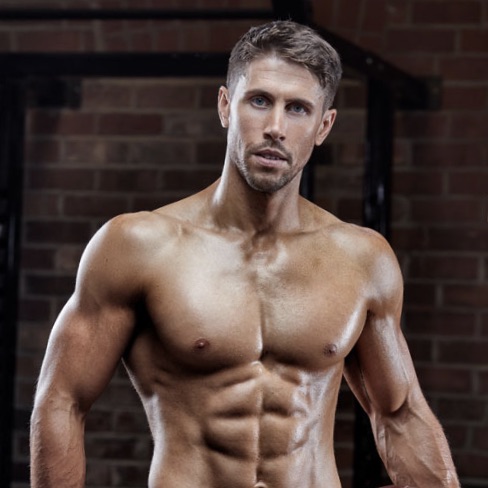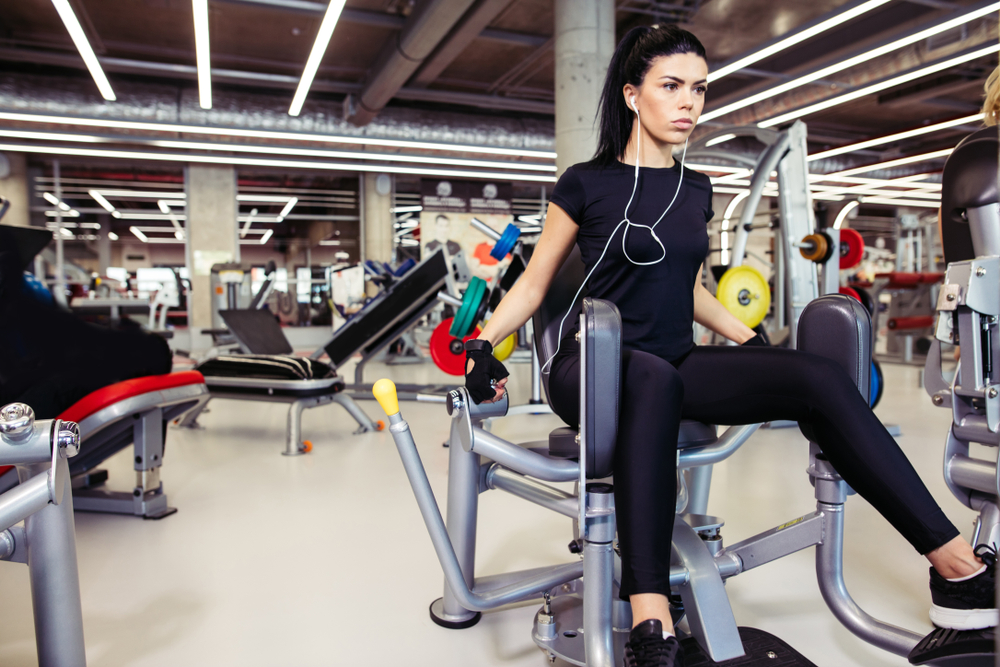If you’re stuck with a case of pancake ass, or looking to develop glutes that are so perky you struggle to get your jeans up, here are some glute exercises and tips you should know.
When butt building is your priority Hip Thrusts ARE the main lifts
Movements with a vertical load vector are great (squats, lunges, step-ups etc.), but loading the horizontal vector should take precedence. Of these, bridges and hip thrust variations rule.
If you’re not hitting these movements first or second in your workout’s then you’re missing a butt-building trick.
For example, a lower body workout might prioritise things in the following order (customised according to your specs, of course):
- Hip thrust or glute bridge variations
- Squat or deadlift variations
- Lunges/step-ups/split squats etc etc.
- Abduction/extension isolated movements (clams, quadruped hip extensions, Naughty Girls machine etc etc.
If your workouts just look like #4 then you’re not even close.
Mini-band glute exercises NEED to be progressed!
Glute exercises with mini-bands can be a great way to train your butt muscles via hip abduction and hip external rotation. BUT there are some key rules you need to know if you want that booty to grow.
There are two problems I commonly see when using mini-bands:
- Using the same low-level activation-type exercises, and not progressing them correctly.
- Using the same strength mini-bands month after month, year after year.
Layering exercise progressions, and slowly adding resistance over time are crucial. 2% increase in weight or 1 extra rep each week is a good target, and the right program should help you achieve this.
Buy thicker and stronger bands over time. This is one of the reasons I think hip circles have been so effective for folks. After years of using tidily rehab bands you now buy yourself a stronger band and voila your butt starts progressing again. It’s not rocket science and those bands aren’t special in any way. You’ve just added some extra load.
Progress your exercises, and continue to progress your bands.
A deficit is for a deficit
Too often I see people set up some steps or benches, but never actually use it to take themselves in to a deficit.
The purpose of a deficit as it relates to your Glute development, is that it takes you further in to hip flexion, thereby loading the gluteus maximus in a more stretched position. You’ll get higher mechanical tension, and more tissue breakdown leading to more Glute gains.
Here’s an extra thing you can try. In this next video I’m combining a deficit squat with an extra 1/4 rep in the bottom position. This creates more time under tension in the deep position. If you have the ability to go deep then go for it.
New move: Bench glute extensions
These are just here because I think they’re cool. Also, because they might be one of the best Glute and hamstring pumpers you’ve never seen or tried before.
For guys they’re not as ball-crushing as you might think either. Promise.
Bench Glute extensions are a great way to work the glutes in their end-range and put a bit of tension through those hammies in a shortened position. I don’t know where they came from, but I’ll credit Bret “Glute guy” Contreras and Eugene Teo for where I first saw these.
There are a few ways you could do them for more glutes-focus: 1) Off an incline bench lying lengthways with a pad (above video). 2) Lying across the bench with a semi-frog stance. 3) Lying across the bench with a more extreme duck stance.
A smith machine is your best option, but a squat rack works too providing you’re not too precious over its use (of more than a place just for squatting). Heels or mid-foot should be against the bar to take out the calf muscles, and depending on whether your focus is more on hamstrings or glutes you can change the angle at the knee.
For more hamstring dominance you’d have a slightly greater angle at the knee, with feet around hip width apart.
Glute activation drills work, but not how you think…
Glute activation drills are pretty popular these days. But throwing them in to your warm-ups won’t magically flip on a switch to ‘activate’ your glutes. It’s physiologically impossible. That doesn’t mean they’re useless though.
Low level Glute exercises like these are an excellent addition to your warm-ups or between sets. They can help ‘re-wire’ the nervous system to encourage greater Glute activation and strength over time. This is termed ‘myelination’ (The book The Talent Code, by Daniel Coyle is an interesting related read).
It’s not an instant fix like some celebrity trainers would cause you to believe. Sorry, the body just doesn’t work that way. But a few low-level drills will help you feel the spot, so you might be in a better position to target your glutes later in the workout or gradually over time.
I covered this topic more in depth for STACK.com: Why your glute activation drills aren’t doing as much as you might think
Put your hamstrings on slack to hit your glutes harder
Hip Thrust variations are THE best way to load the Glutes in end-range hip extension.
Versus say a deadlift pattern, the bent-knee position in hip thrusts and Glute bridges put the hamstrings on slack, thereby placing more emphasis on the Glute max as a hip extensor. Even more-so in Hip Thrusts than during Glute Bridges, as the back elevation with the Hip Thrust places the hamstrings at an even greater disadvantage.
The great thing is that they’re suitable for all levels. Beginners can start with bodyweight, bodyweight with 1-leg etc, before progressing with some load.
For more advanced you can even add in some intensity techniques to the traditional barbell hip thrust, or you can vary them by working one leg or in a staggered stance.
Upper versus lower glutes exercises
Can you target either the upper or lower portion of the Glutes? Technically, yes you can!
As with any other muscle you’re not ‘isolating’ a certain portion of that muscle, but you can shift emphasis of muscle activation.
The lower gluteus maximus is involved in three main actions: Hip extension, hip hyperextension, and hip transverse abduction.
The upper portion of the gluteus maximus is involved in five different actions: Hip extension, hip hyperextension, hip transverse abduction, hip abduction, and hip external rotation.
Therefore, we need a good amount of variety in our glute exercises to hit all these actions.
Whilst movements such as bridges, hip thrusts, pull-throughs and back extensions work well to target both upper and lower fibres, other movements that require hip abduction or external rotation can further target the upper portion (e.g., band side walks, side-lying hip abductions, ankle weight hip abduction, cable hip abduction).
Full squats, lunges, sumo deadlifts and high step-ups do a pretty good job of working the lower portion of the Glutes in a stretched position, too.
Above all be consistent with a well-designed and progressive training program and be sure to add a good variety of glute exercises to your workouts.
I want to be YOUR Trainer – you in? Learn more about building your butt, biceps and more HERE.

I build Olympians, Cover Models and those who want to look like them. Author or “Ultimate Abs” available in all good book stores.

much needed article